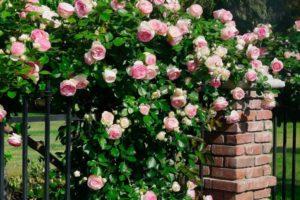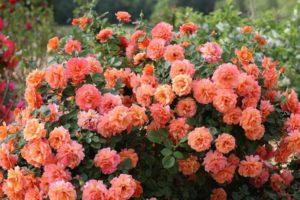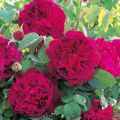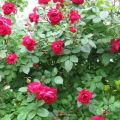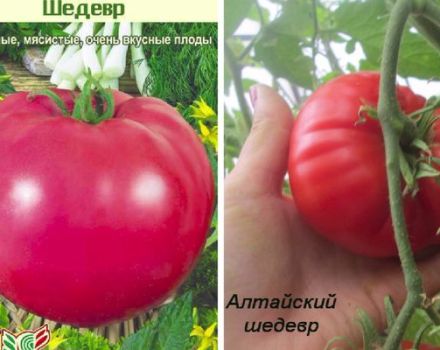Descriptions of the best varieties of roses of the Climber group and their characteristics, planting and care
Many gardens are decorated with picturesque garlands of blooming roses. Some of them cascade down, others decorate arches and trellises. Climber roses are coveted residents of home gardens. No wonder they occupy leading positions in vertical gardening. Beautiful decorative columns are created with the help of roses. With the right care, beautiful flowers can be enjoyed multiple times per season.
Description of groups of climbing roses ramblers and climbers
When choosing plants that will decorate arches or arbors, you should pay attention to the classification of flowers. There are two groups of climbing roses. The first group includes small-flowered ramblers, and the other includes large-flowered climbers.
Rambler has thin, creeping or drooping stems that reach up to 4 meters in length. The inflorescences are double or simple; they are impressive not so much in their shape as in their quantity. The branches are pliable and flexible, so they need support. They are remarkable in that they can bloom on the shoots of past years.
Climber is a long-flowering plant. They are decorated with large individual flowers or inflorescences (up to 5 buds) and rigid branches up to three meters long. They grow more slowly, but at the same time flowers are present on all branches: last year's and young ones. The plant grows in width, and the branches are difficult to tie, so rose growers are often grown without supports on erect stems.
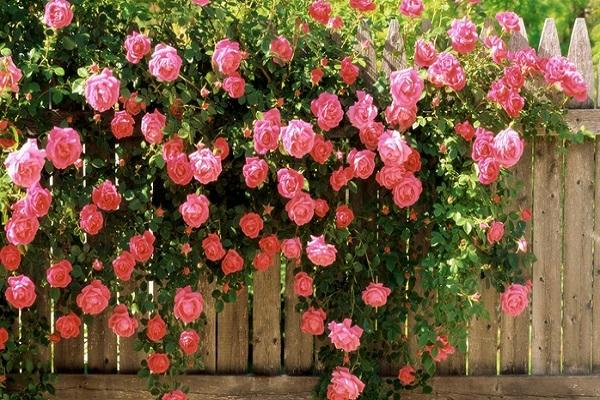
Klaiber varieties
The Climber group is derived from mutations in the buds of hybrid tea species and Floribunda. This group includes many climbing roses of different varieties. Everyone is united by a pleasant smell and beautiful flowering, which lasts throughout the warm season.
Ducat
Rose Ducat is a large-flowered plant with golden buds. The petals are loosely arranged, giving the bush an airiness. The purple edge emphasizes the decorative effect of the plant. The buds give off a mild fruity aroma that is especially pronounced in the early morning or after rain.
The size of the flower reaches 10 centimeters, the leaves are immune to diseases. The stems are not too stiff, so they easily clip onto the support. The plant is moderately susceptible to disease and frost.
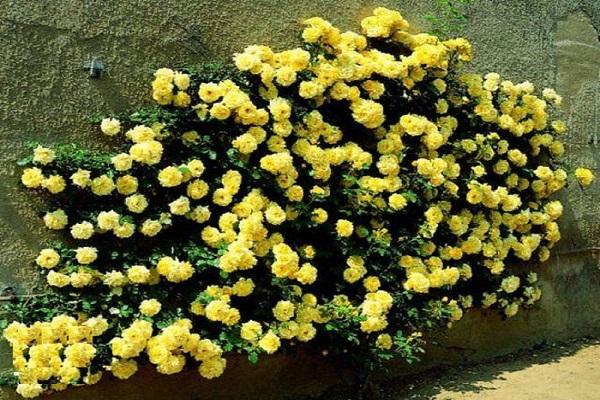
Don Juan
The representative of bright red flowers has large buds - up to 18 centimeters in diameter. The variety is distinguished by a spreading tall bush, about 2 meters wide and up to 3 meters long.
The plant of amazing beauty on last year's shoots has ruby, almost brown buds. And the new branches are decorated with purple roses. The variety blooms continuously and abundantly. The dark leathery leaves accentuate the beauty of the buds.
This variety has gained popularity, as the plant has good immunity to diseases and resistance to changes in weather conditions.

Alibaba
A plant with a fabulous name has terry inflorescences of an unusual coral or apricot color. The edges of the buds are wavy and bloom at the same time; on one peduncle - up to five pieces. The exotic scent is reminiscent of the scent of apricot and passionfruit.
Alibaba grows up to two meters tall and doesn't need much pruning. In addition, the plant is easily adaptable to weather conditions. And for resistance to various diseases, it was repeatedly awarded at competitions.
Varieties of the Rambler group
The climbing bushes are characterized by soft, creeping branches and vigorous growth. Shoots can be up to 10 meters long. At the same time, the plants delight with a rich selection of various varieties that are particularly resistant to various diseases.
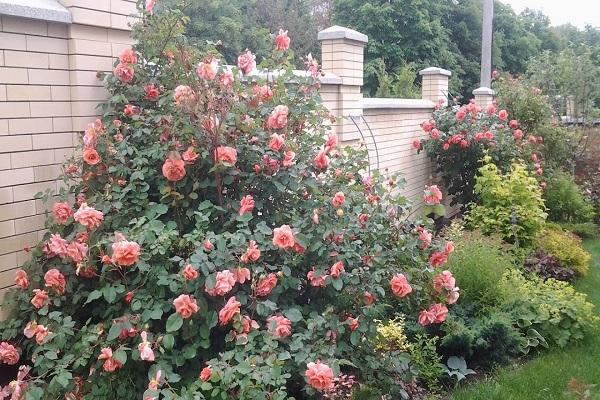
Rose Red Rambler
This park plant is intended to beautify the most prominent places. Fiery buds, framed by green foliage, delight the entire season. Each re-blooming of buds is more abundant than the previous one. Despite the fact that the flowers do not gather in inflorescences, they are rather large and fascinate with their bright shade.
Plants are resistant to pests and plant infections.
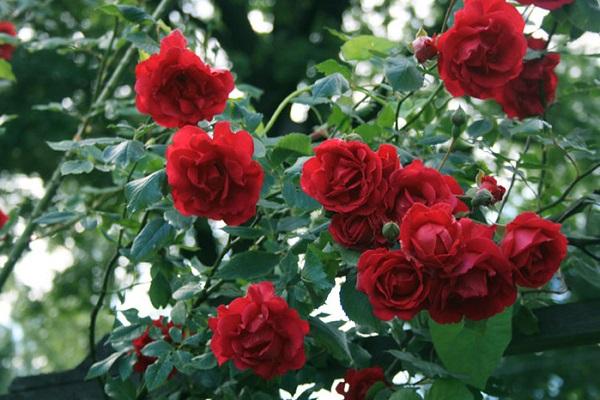
Manninkton Mov Rambler
Bright purple buds will not leave anyone indifferent. The color of the flowers fades towards the autumn period and becomes already light lilac.
The buds are small double flowers, the diameter of which is no more than three centimeters. Dull leaves gently envelop the plant. Rose growers pay attention to the bush also because there are practically no thorns on it.
Mannington Mauve Rambler is the tallest plant in the group. Shoots reach 6 meters. It grows in sunny areas and in the shade. The scent is heard only during flowering, but it is very delicate and fragrant.
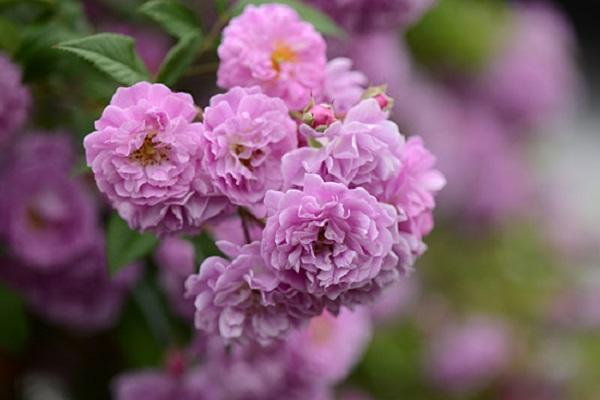
Lemon Rambler
This is a young variety, bred by breeders recently. Beautiful white buds, which turn into a gentle lemon shade by the middle, are located on three-meter branches.
Lemon Rambler is the strongest fragrance and bloom abundantly. As soon as some shoots fade, others begin to be covered with buds. The plant is not hardy, but it can tolerate a small "minus" of degrees.
Camelot
An amazingly elegant variety - Camelot. Dark crimson double petals with dark blotches thin the fresh citrus scent. It is a strong and hardy plant that adorns pergolas, fences, arches.
The size of the bush reaches one and a half meters in width and up to three meters in height. It easily tolerates temperature extremes and is resistant to disease.
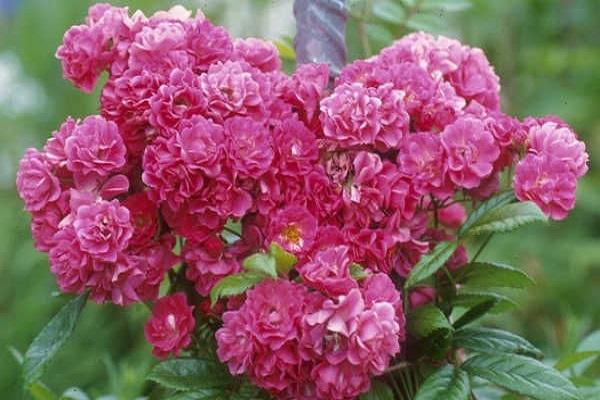
Brewood Belle
A very beautiful bush with purple roses. Despite its small buds, the bush is impressive in its size (up to 5 meters) and abundantly flowering shoots. The selectors tried to make the plant easily tolerate cold and disease. Therefore, many rose growers prefer to see him on their site.
Utersen
The adorable dark crimson buds are divided into four segments. The three-meter bush is literally buried in thick double brushes. Dissolving in waves, the buds acquire a silvery hue. The constant blooming of the brushes makes the bush elegant and unusually beautiful.
The light aroma of a mixture of apple and wild rose leaves an unforgettable impression. The variety is quite resistant to cold weather, so a light shelter is enough for the winter.
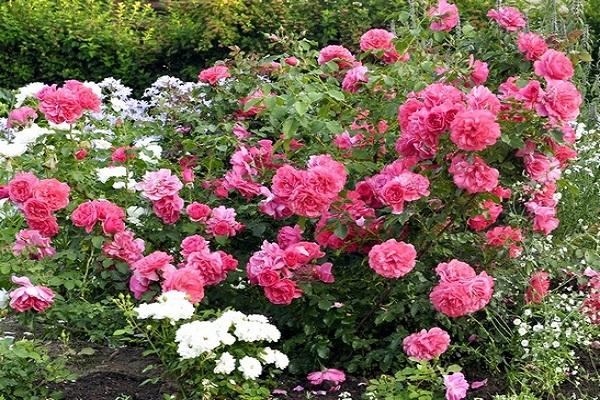
Climber and rambler varieties suitable for different regions of Russia
The choice of weaving beauties varies, depending on the climatic conditions of a particular region.
In the conditions of the Middle zone, which includes the Yaroslavl, Tula, Ryazan, Oryol regions, the climate is temperate continental. Therefore, the following types of Climber roses are recommended here:
- Flamingant with bright scarlet buds;
- climbing rose orange Orange;
- Rosarium Utersen with wavy petals;
- thick yellow Baroque rose;
- Blue Moon with deep blue inflorescences;
Among Rambler, the best varieties are:
- large variety Camelot;
- Eppil Blossom with a snow-white inflorescence;
- large-flowered Rosarium Utersen with pink flowers.
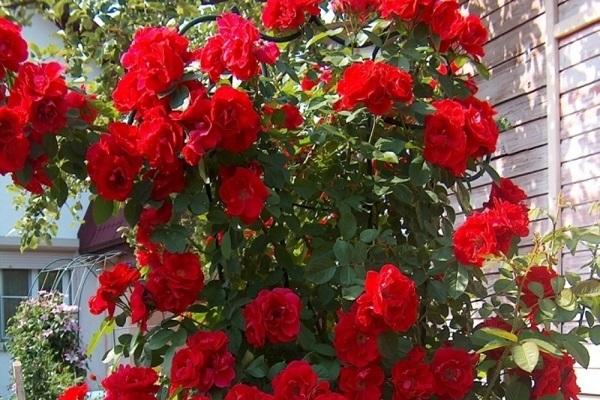
The emergence of new varieties of climbing roses made it possible to grow them in the Siberian region. These varieties are quite resistant to frost and winds, but demanding shelter for the winter:
- Chippendale;
- Queen Elizabeth;
- Golden Celebration;
- William Shakespeare 2000;
- Westerland.
The northwestern territory is dominated by a temperate continental climate. It is recommended to grow the following varieties here:
- densely leafy, spreading rose New Down;
- cream Ilze Kron Superior;
- Super Excelsa, with bright crimson buds;
- Densely double grade Santana.
Climing roses can be grown in the southern regions of Russia. They have poor frost tolerance and shade tolerance. But in warm places, flowers delight with large and bright buds.
It is important: so that the roses grow in mass and correspond to the declared characteristics, attention is paid to the climate of the region, the composition of the soil, and plant care.
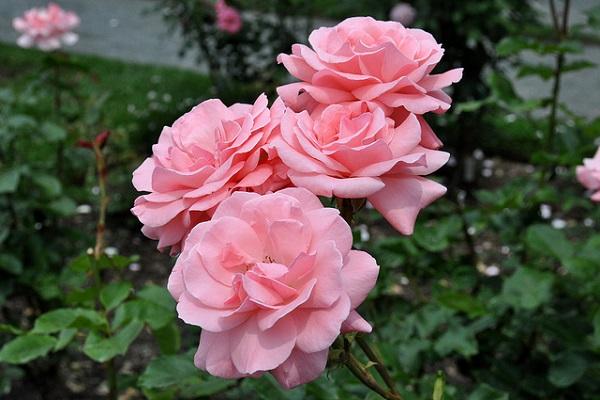
Landing
Saplings of weaving roses are self-rooted and grafted, as well as with an open and closed root system. Plants with an open rhizome are planted in the autumn, from October to November, and grafted plants, in the spring. Roses in containers are planted outdoors at any time.
For planting, a hole is dug half a meter deep. At the same time, a place is allocated for laying shoots for the winter under a shelter. In the pit, the soil is mixed with organic matter, and then the plant is watered abundantly. When planting in spring, the branches are shortened to 7 buds, and the root is cut 20 centimeters. After this, the sections are recommended to be treated with ash or garden pitch.
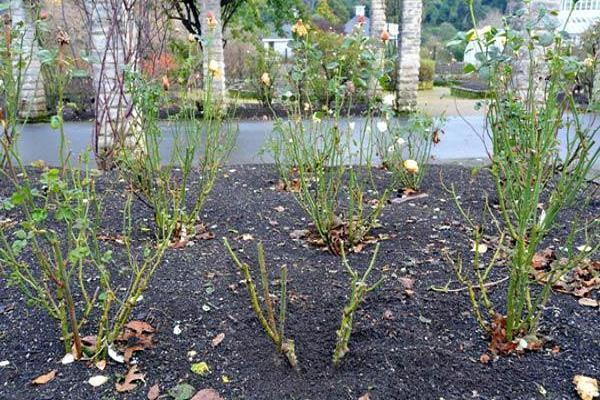
Watering
The bushes feel fine with moderate watering. It is enough to carry out the procedure once a week. Overflow can cause disease, and drought will prevent roses from blooming in full force. A lot of moisture is needed only when planting a plant until it takes root. To do this, it is recommended to make a small earthen ditch around the place where the rose is planted to retain moisture.
Fertilizer
For roses, the best fertilizer is manure or any organic fertilizer. During the period of intensive growth, mineral fertilizer can be added. Top dressing is carried out before the buds appear. As soon as the plant has bloomed, no fertilizer can be added under the bush.

Pruning
The procedure is performed over the entire height of the bush to form the crown. Pruning improves decorative qualities.
Pruning shoots is recommended in spring and summer. Dead and frostbitten stems are harvested in spring. The strongest and longest vines are left on the bush. While the plant is young, rosehip shoots are systematically removed. After 2 years, only a rose shoot appears.
In the summer, faded branches are removed. This will help the bush to rejuvenate and provoke the formation of replacement shoots.
Important: it is not recommended to remove shoots in autumn, as new shoots will grow, which will not have time to ripen by winter and therefore will die.

Differences from other roses
Climbing roses of the Climber and Rambler groups are popular with rose growers. This is due to their merits:
- unpretentious;
- decoratively beautiful;
- continuous or repeated blooming of buds along the entire length of the shoots;
- winter hardy;
- buds are single or collected in inflorescences.
Breeders continue to actively work on new varieties, so distinctive features are mixed.
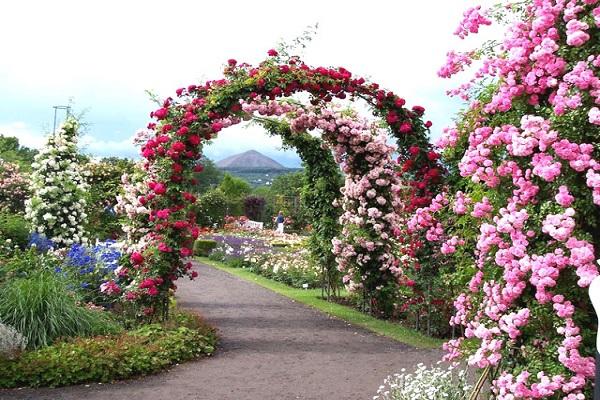
Application in landscape design
The rich variety of colors and the pleasant aroma of the royal plant transform any backyard.
In the country landscape, rose hedges are popular. They are installed along the site, allow you to fence off the road or neighbors. Climber roses are most suitable for these purposes. They will provide planting density to create a dense wall.
Park Rambler look amazingly beautiful against the background of evergreens. Roses are planted in the foreground, and deciduous, coniferous trees or tall bushes in the background.

Roses look beautiful in vertical gardening. For this, special high supports, trellises are installed, along which heavy branches of roses are woven, abundantly strewn with buds.
A rose in a solitaire looks wonderful. A single plant will be an accent in the design composition.
The bushes look great in the mixborder. In this case, different plants can coexist:
- bulbous;
- letniki;
- perennial flowers;
- cereals;
- shrubs.
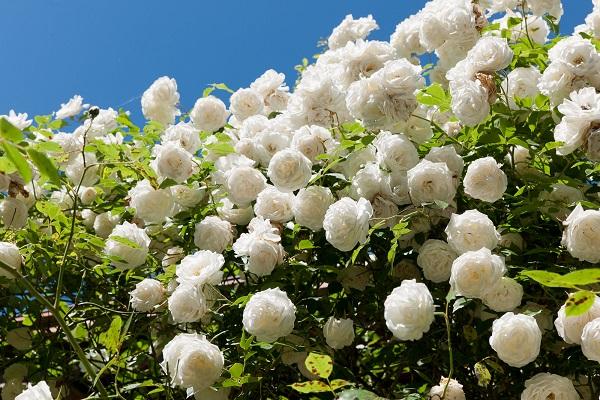
First, a rose is planted, and then neighbors are selected according to the color scheme, the shape of the inflorescences, and the contrast.
Roses come in a rich variety of varieties. This allows the rose grower to pick the right plant for the garden. Climber and Rambler roses delight with their buds several times a season. They go well with small architectural forms.
